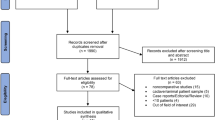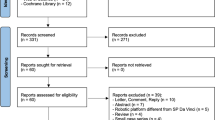Abstract
Open simple prostatectomy (OSP) is an effective treatment for patients with symptomatic BPH and larger volume prostates; however, it is associated with substantial risks of bleeding, transfusion and prolonged hospital length of stay (LOS). Robotic-assisted simple prostatectomy (RASP) potentially offers improved perioperative outcomes for these patients. We systematically reviewed published data on RASP outcomes and analyzed our experience at the University of California San Diego (UCSD). We identified eight published studies, all non-comparative case series (Level 3 evidence), reporting a total of 109 RASP cases from 2008 to 2012. Indications included acute urinary retention (n=48), persistent obstructive symptoms (n=51), failure of medical management (n=9) and recurrent urinary tract infections (n=2). The mean ages ranged from 65 to 77 years. More than 75% of the studies reported a mean LOS <3 days and a transfusion prevalence of 0%. The mean resected prostate weights ranged from 51 to 301 g. For UCSD, indications for surgery included urinary retention (n=11) and failure of medical management (n=5). The mean age was 68 years, transfusion prevalence 0%, mean resected prostate weight 94 g and mean LOS 1 day. All nine series observed substantial postoperative improvements in urinary symptoms and retention. These data suggest that RASP is a safe and efficacious treatment for BPH in select patients with larger prostates. Although LOS and transfusion prevalence for RASP are markedly lower than the published OSP series, comparative studies are needed to verify these results.
This is a preview of subscription content, access via your institution
Access options
Subscribe to this journal
Receive 4 print issues and online access
$259.00 per year
only $64.75 per issue
Buy this article
- Purchase on Springer Link
- Instant access to full article PDF
Prices may be subject to local taxes which are calculated during checkout

Similar content being viewed by others
References
Wei JT, Calhoun E, Jacobsen SJ . Urologic diseases in america project: benign prostatic hyperplasia. J Urol 2008; 179: S75–S80.
Kupelian V, Wei JT, O’Leary MP, Kusek JW, Litman HJ, Link CL et al. Prevalence of lower urinary tract symptoms and effect on quality of life in a racially and ethnically diverse random sample: the Boston Area Community Health (BACH) Survey. Arch Intern Med 2006; 166: 2381–2387.
Jacobsen SJ, Girman CJ, Guess HA, Rhodes T, Oesterling JE, Lieber MM . Natural history of prostatism: longitudinal changes in voiding symptoms in community dwelling men. J Urol 1996; 155: 595–600.
Parsons JK, Bergstrom J, Silberstein J, Barrett-Connor E . Prevalence and characteristics of lower urinary tract symptoms in men aged>or=80 years. Urology 2008; 72: 318–321.
Parsons JK . Benign prostatic hyperplasia and male lower urinary tract symptoms: epidemiology and risk factors. Curr Bladder Dysfunct Rep 2010; 5: 212–218.
Parsons JK, Wilt TJ, Wang PY, Barrett-Connor E, Bauer DC, Marshall LM . Progression of lower urinary tract symptoms in older men: a community based study. J Urol 2010; 183: 1915–1920.
Taylor BC, Wilt TJ, Fink HA, Lambert LC, Marshall LM, Hoffman AR et al. Prevalence, severity, and health correlates of lower urinary tract symptoms among older men: the MrOS study. Urology 2006; 68: 804–809.
Groves HK, Chang D, Palazzi K, Cohen S, Parsons JK . The incidence of acute urinary retention secondary to BPH is increasing among California men. Prostate Cancer Prostatic Dis 2013; 16: 260–265.
Stroup SP, Palazzi-Churas K, Kopp RP, Parsons JK . Trends in adverse events of benign prostatic hyperplasia (BPH) in the USA, 1998 to 2008. BJU Int 2012; 109: 84–87.
Saigal CS, Joyce G . Economic costs of benign prostatic hyperplasia in the private sector. J Urol 2005; 173: 1309–1313.
McVary KT, Roehrborn CG, Avins AL, Barry MJ, Bruskewitz RC, Donnell RF et al. Update on AUA guideline on the management of benign prostatic hyperplasia. J Urol 2011; 185: 1793–1803.
Serretta V, Morgia G, Fondacaro L, Curto G, Lo bianco A, Pirritano D et al. Open prostatectomy for benign prostatic enlargement in southern Europe in the late 1990 s: a contemporary series of 1800 interventions. Urology 2002; 60: 623–627.
Mearini E, Marzi M, Mearini L, Zucchi A, Porena M . Open prostatectomy in benign prostatic hyperplasia: 10-year experience in Italy. Eur Urol 1998; 34: 480–485.
de la Rosette JJ, Alivizatos G, Madersbacher S, Perachino M, Thomas D, Desgrandchamps F et al. EAU Guidelines on benign prostatic hyperplasia (BPH). Eur Urol 2001; 40: 256–263.
Ou R, You M, Tang P, Chen H, Deng X, Xie K . A randomized trial of transvesical prostatectomy versus transurethral resection of the prostate for prostate greater than 80 mL. Urology 2010; 76: 958–961.
Ahmed Gadam I, Nuhu A, Aliyu S . Ten-year experience with open prostatectomy in maiduguri. ISRN Urol 2012; 2012: 406872.
Gratzke C, Schlenker B, Seitz M, Karl A, Hermanek P, Lack N et al. Complications and early postoperative outcome after open prostatectomy in patients with benign prostatic enlargement: results of a prospective multicenter study. J Urol 2007; 177: 1419–1422.
Ngugi PM, Saula PW . Open simple prostatectomy and blood transfusion in Nairobi. East Afr Med J 2007; 84: S12–S23.
Suer E, Gokce I, Yaman O, Anafarta K, Gogus O . Open prostatectomy is still a valid option for large prostates: a high-volume, single-center experience. Urology 2008; 72: 90–94.
Varkarakis I, Kyriakakis Z, Delis A, Protogerou V, Deliveliotis C . Long-term results of open transvesical prostatectomy from a contemporary series of patients. Urology 2004; 64: 306–310.
Sotelo R, Clavijo R, Carmona O, Garcia A, Banda E, Miranda M et al. Robotic simple prostatectomy. J Urol 2008; 179: 513–515.
John H, Bucher C, Engel N, Fischer B, Fehr JL . Preperitoneal robotic prostate adenomectomy. Urology 2009; 73: 811–815.
Matei DV, Spinelli M, Nordio A, Brescia A, Crisan N, Coman I . Robotic simple prostatectomy. Eur Urol Suppl 2008; 9: 337.
Matei DV, Brescia A, Mazzoleni F, Spinelli M, Musi G, Melegari S et al. Robot-assisted simple prostatectomy (RASP): does it make sense? BJU Int 2012; 110: E972–E979.
Sutherland DE, Perez DS, Weeks DC . Robot-assisted simple prostatectomy for severe benign prostatic hyperplasia. J Endourol 2011; 25: 641–644.
Uffort E, Jensen J . Robotic-assisted laparoscopic simple prostatectomy: an alternative minimal invasive approach for prostate adenoma. J Robot Surg 2010; 4: 7–10.
Vora A, Mittal S, Hwang J, Bandi G . Robot-assisted simple prostatectomy: multi-institutional outcomes for glands larger than 100 grams. J Endourol 2012; 26: 499–502.
Yuh B, Laungani R, Perlmutter A, Eun D, Peabody JO, Mohler JL et al. Robot-assisted Millin’s retropubic prostatectomy: case series. Can J Urol 2008; 15: 4101–4105.
Zargooshi J . Open prostatectomy for benign prostate hyperplasia: short-term outcome in 3000 consecutive patients. Prostate Cancer Prostatic Dis 2007; 10: 374–377.
Baumert H, Ballaro A, Dugardin F, Kaisary AV . Laparoscopic versus open simple prostatectomy: a comparative study. J Urol 2006; 175: 1691–1694.
McCullough TC, Heldwein FL, Soon SJ, Galiano M, Barret E, Cathelineau X et al. Laparoscopic versus open simple prostatectomy: an evaluation of morbidity. J Endourol 2009; 23: 129–133.
Author information
Authors and Affiliations
Corresponding author
Ethics declarations
Competing interests
Dr Kane is a consultant or has received honoraria from Amgen Inc, Janssen Inc, Dendreon Inc and Intuitive Inc. Dr J Kellogg Parsons is a speaker for American Medical Systems and a consultant for Sophiris and Watson. The remaining authors declare no conflict of interest.
Rights and permissions
About this article
Cite this article
Banapour, P., Patel, N., Kane, C. et al. Robotic-assisted simple prostatectomy: a systematic review and report of a single institution case series. Prostate Cancer Prostatic Dis 17, 1–5 (2014). https://doi.org/10.1038/pcan.2013.52
Received:
Revised:
Accepted:
Published:
Issue Date:
DOI: https://doi.org/10.1038/pcan.2013.52
Keywords
This article is cited by
-
Robot-assisted simple prostatectomy for prostates greater than 100 g
World Journal of Urology (2023)
-
Comparison of the efficacy and safety of robotic-assisted simple prostatectomy and laser enucleation of prostate for large benign prostatic hyperplasia
Journal of Robotic Surgery (2023)
-
Robotic-assisted simple prostatectomy versus open simple prostatectomy: a New York statewide analysis of early adoption and outcomes between 2009 and 2017
Journal of Robotic Surgery (2021)
-
From open simple to robotic-assisted simple prostatectomy (RASP) for large benign prostate hyperplasia: the time has come
World Journal of Urology (2021)
-
Robot-Assisted Simple Prostatectomy: Expanding on an Established Operative Approach
Current Urology Reports (2017)



